256 CD / The Koroliov Series Vol. XXI. Johannes Brahms
Description
No. 21, the 21st recording of Evgeni Koroliov for the TACET label is available! What I particularly love in the playing of Koroliov: his ability to work out under a veil of objectivity, faithfulness to the text and modesty details of such sensibility and expressivity that make me believe listening for the first time to that piece of music. The 19 Intermezzi by Johannes Brahms offer plenty of opportunity for that.
6 reviews for 256 CD / The Koroliov Series Vol. XXI. Johannes Brahms
You must be logged in to post a review.

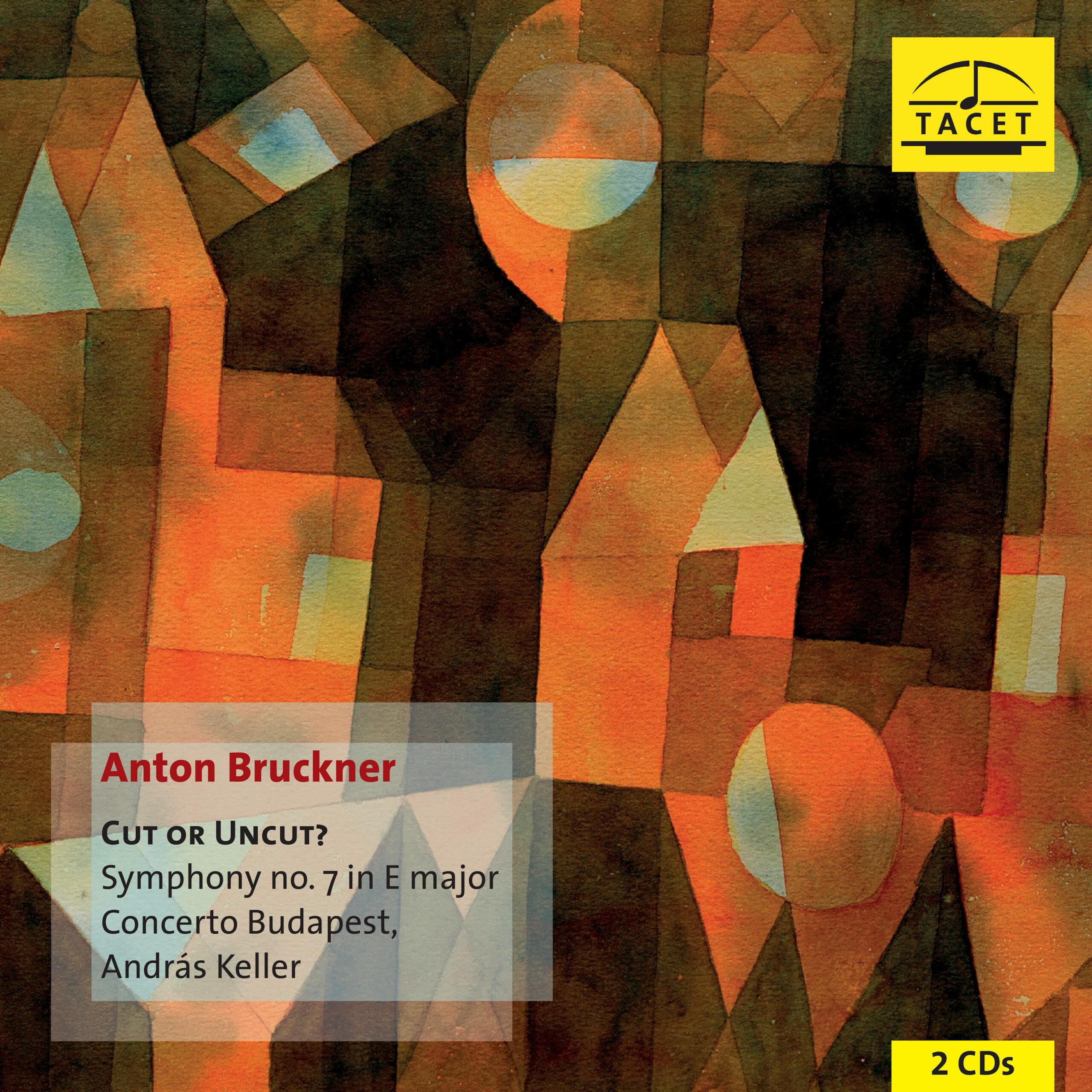
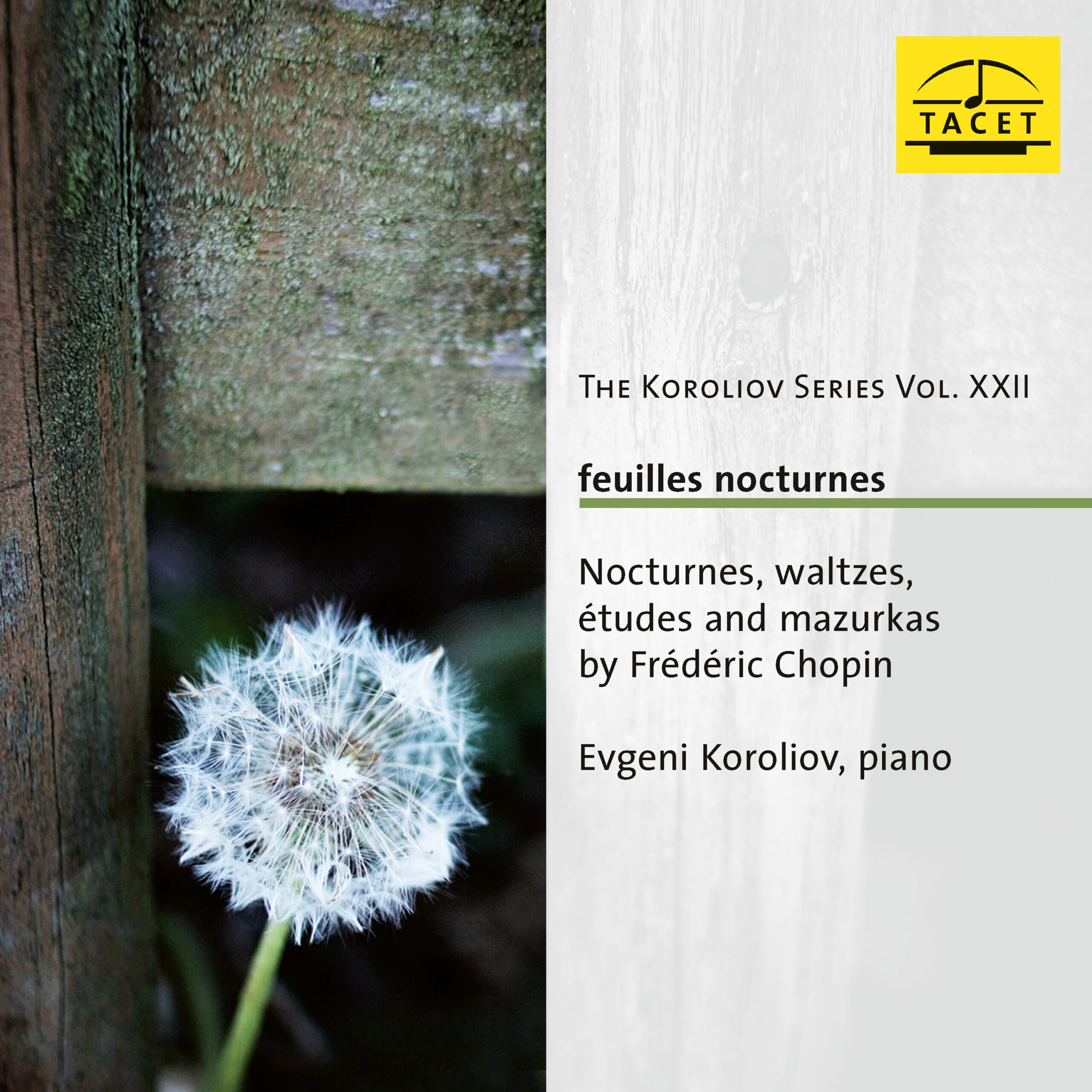
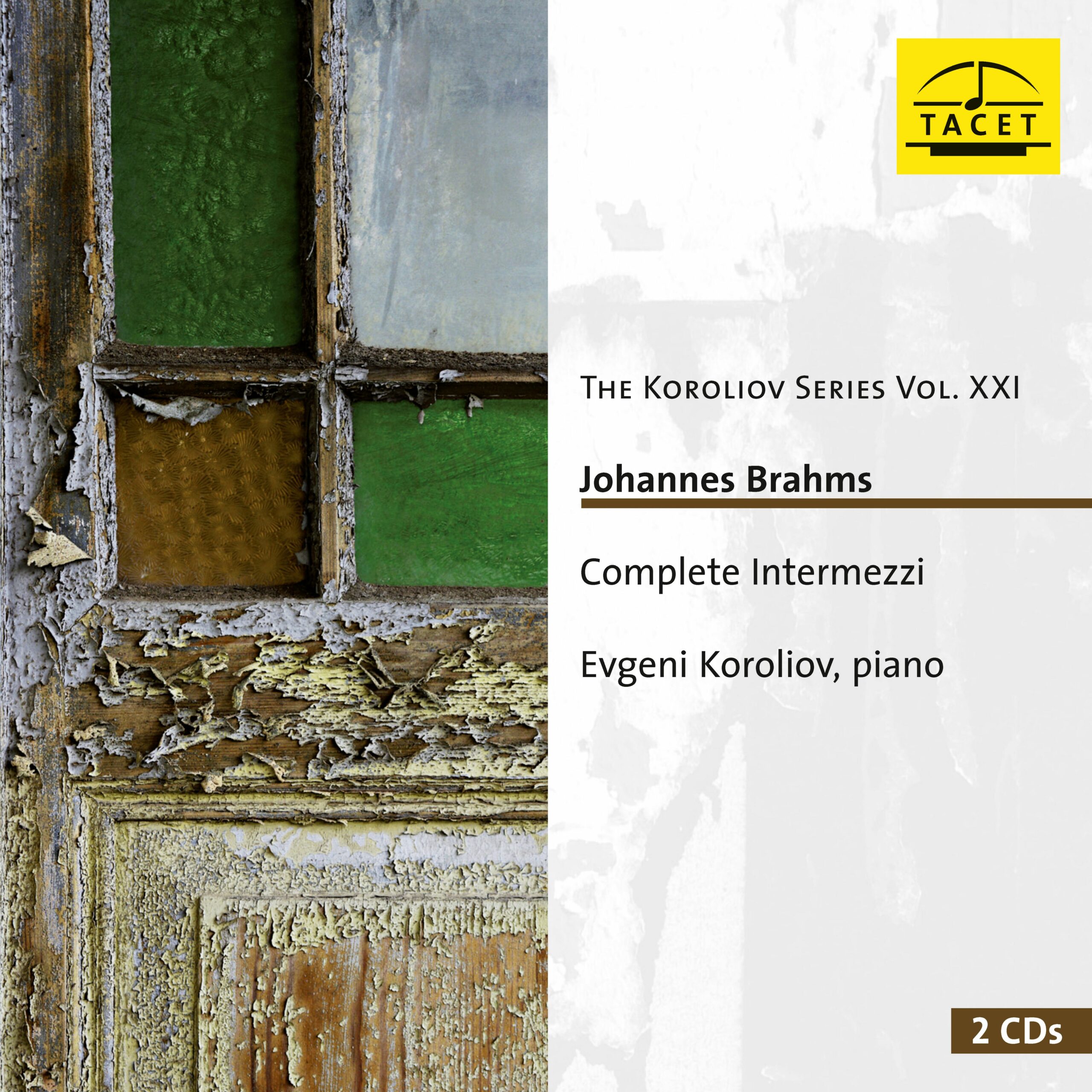
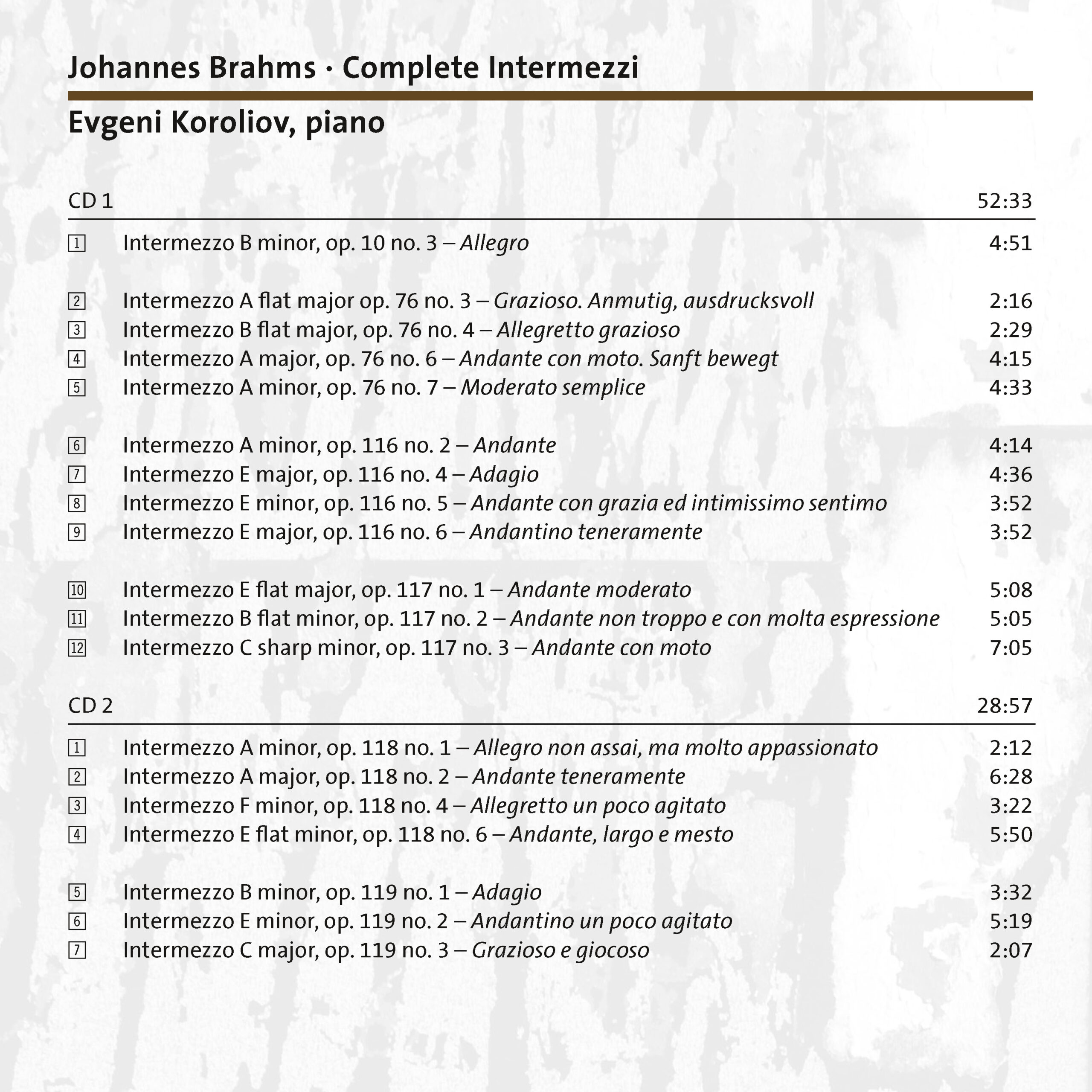





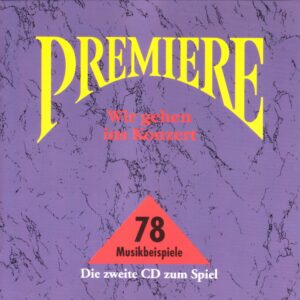


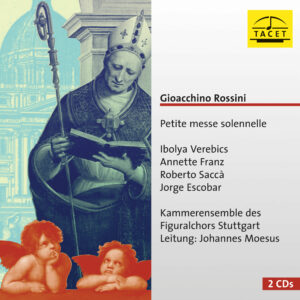
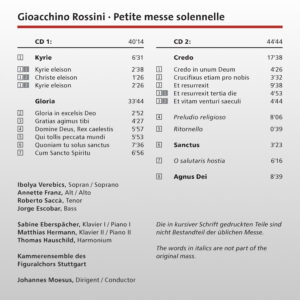
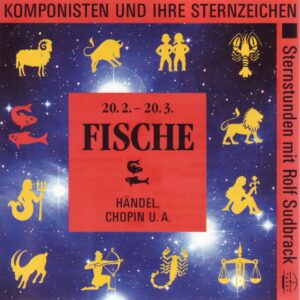

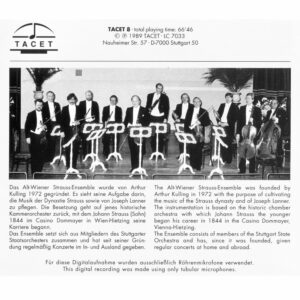
Musicweb International –
--> original review
As you can observe in the heading, this is volume 21 of Tacet's massive Evgeni Koroliov series, which involves the music of various composers, including JS Bach, Mozart, Beethoven, Schubert, Schumann, Chopin, Tchaikovsky, Debussy, Stravinsky and Prokofiev. His Bach interpretations in particular both in this series and in live performance have generally drawn extremely positive notice from critics. Moscow-born (1949), Hamburg-based, Evgeni Koroliov is better known in Europe than in the Americas, though many concertgoers across the globe remain unfamiliar with his excellent work. Here in the music of Brahms, he once again exhibits his considerable keyboard skills and insights.
To give you an idea of Koroliov's style, one clearly notices an especially serene and ponderous take on this music, which is not an unexpected interpretive approach in works of mostly tranquil and hushed character, and with all but a few having slower tempo markings. Koroliov might be compared with the somewhat measured Emanuel Ax (Sony Classical) who recorded seven of the nineteen Intermezzos. But an even better example would be Timothy Ehlen (Azica), a little known pianist who recorded fourteen of them. I reviewed his CD in 2018 quite favorably here. He too plays with tempos on the expansive side and chooses to point up the more serene and profound aspects of the music. I can say further that Koroliov could be considered quite the opposite of the much brisker Stephen Kovacevich (Philips), who makes an excellent case for his more driven approach in his selection of ten of the Intermezzos.
Ich habe Brahms‘ Tendenz zum Heiteren und Tiefgründigen in dieser Musik mehr als angedeutet, aber ich muss auch darauf hinweisen, dass es in einigen dieser Stücke oft eine dunkle oder störende Unterströmung gibt. Die Nr. 3 von op. 10, die im Katalog des Komponisten als dritte der vier frühen Balladen zu finden ist, zeigt in ihrem Anfang einen aufgewühlten, etwas turbulenten Charakter, obwohl sie sich schließlich in ein ruhigeres Gebaren einpendelt. Es hat mich ein wenig überrascht, dass Koroliov in den ersten Momenten eine Verbindung zwischen Brahms und Liszt herzustellen scheint, denn die ersten Takte werden so gespielt, als ob Brahms sich des Beginns der h-Moll-Sonate von Liszt aus dem Jahr 1853 nur allzu bewusst ist, einem damals sehr neuen Stück, das Brahms vielleicht noch nicht gehört hatte: Es war Robert Schumann, Brahms‘ engem Freund, gewidmet, und eine Kopie der Sonate befand sich im Mai 1854, demselben Jahr, in dem Brahms dieses Stück schrieb, in Schumanns Haus. Auf jeden Fall gefällt mir Koroliovs Umgang mit diesem Stück sehr gut, da er seinen aufgewühlten Charakter auf subtile Weise in einen ruhigeren, gelasseneren verwandelt. Das Intermezzo op. 76, Nr. 3 beginnt spielerisch, und Koroliov verleiht ihm einen Charme und eine fast kindliche Unschuld, die die Musik sehr ansprechend machen. Aus demselben Satz bringt Koroliov die Wärme des lyrischen Intermezzos Nr. 6 schön zur Geltung, obwohl ich finde, dass er im anschließenden Intermezzo Moderato semplice ein wenig zu langsam ist.
The A minor Intermezzo, Op. 116, No. 2, is almost static in its pacing here, yet Koroliov imparts a hypnotic quality to the music with deft use of the pedal: notes linger amid the clearly wrought lines as the music gently caresses the ear. Koroliov plays up the subdued aspects of the E major (Adagio), E minor (Andante) and E major (Andantino teneramente) Intermezzos that follow. Yet, for all their beauty and clarity the works might sound even more effective with less expansive pacing. Still, they are splendid performances.
All three Intermezzos in the Op. 117 set come across with much the same care in their clarity and overall phrasing. Thus, they are fine, maybe even excellent accounts, but I found myself wishing for a bit of a pickup in tempo, despite the beautiful playing throughout, especially in the middle section of the third Intermezzo (C-sharp minor).
In the Op. 118 Intermezzos Koroliov once again plays the music with exquisite attention to detail, dynamics, pedaling and virtually all other facets of phrasing. It's hard to find fault with any single performance once you accept his generally slower tempos. No. 1, in A minor, is nicely played alright, though less stormy than what one encounters in most other performances. That said, it still has enough energy and drive to convey its sense of agitation. Koroliov turns in a warm and utterly gorgeous account of the ensuing A major, one of Brahms' most poignant Intermezzos. No. 6, the fourth of the Intermezzos in this set, is in the rather rare key of E-flat minor, which I always associate with darker music—and dark it is here indeed, despite its mostly placid demeanor. Koroliov conveys its troubling music convincingly, but rightly finds bursts of sunlight in the middle section. The final three Intermezzos here, from Op. 119, are all well played, with the outstanding performance being the tempestuous No. 2, in E minor.
The sound reproduction on this Tacet CD set is excellent. I've already mentioned three other competing versions of these pieces—and they're all fine in their own way—but making comparisons is problematic because these and most other recordings of the Intermezzos that you encounter are selections from the nineteen coupled with other Brahms pieces. However, the late Luba Edlina has all the Intermezzos on a single Chandos CD and she is quite compelling, and her more centrist tempos clearly set her apart from Koroliov. Of course, other pianists like Idil Biret on Naxos have done them on large multi-disc sets in their surveys of Brahms' complete solo piano works.
Here's what this comes down to: this double-disc set contains eighty-one and a half minutes of music, which could fit on a single disc. I have several CDs holding more: I reviewed an 82:33 CD of the Mahler Ninth Symphony from Oehms Classics here to cite just one example. Although Tacet offers a discount, it isn't sizeable enough to compete with the Luba Edlina Chandos CD at the web retailers I checked. So price will be an issue for some readers. If it's not a concern for you, I must say Koroliov's performances are highly individual and eminently worth hearing.
Robert Cummings
Pizzicato –
--> original review
This double disc is already the 21st part of the Koroliov series on Tacet, presenting the art of the 70-year-old Russian pianist Evgeni Koroliov, who has been living in Hamburg for 40 years now. Brahms also composed 19 intermezzi for his instrument, the piano. While the early compositions in their character as intermezzi, i.e. interludes, are revealed from the context with the other pieces of the respective cycle, the late contributions to the genre have an independent narrative from within themselves.
Koroliov's playing is focused on detail, which could seem a bit brittle if Koroliov did not succeed in always sensing the essence of the music and bringing it to the fore with his very personal style. He gives the music the time it needs to develop freely. In this way he develops calmly explored sound spaces, which here, especially in the earlier intermezzi, require that one devote oneself to what one hears in order to enjoy the subtleties. The second disc of Brahms' late, final piano-only compositions show greater agility and offer more immediate listening access, so this second shorter disc, other labels would have combined the playing time on one disc, speaks more directly to the listener.
As always with Tacet, the recording tingles with technical flawlessness that nonetheless comes alive.
Uwe Krusch
concerti –
--> original review
Spiritual penetration and power of imagination: Evgeni Koroliov proves his class with this recording of all Brahms intermezzi.
Brahms' intermezzi are considered delicate. The lyrical-intimate basic tone of most of these pieces does not tolerate a cheeky display of emotions; on the other hand, the miniatures, some of which are barely longer than two minutes, must not be played in a soberly undercooled manner under any circumstances. Expression can be gained through subtle elaboration of the poetic content, whereby perfect tonal control, even in pianissimo, is the basic pianistic prerequisite. Many keyboard lions therefore prefer to leave it alone, while Evgeni Koroliov can be considered the ideal interpreter for this sensitive music. The quiet Russian, whose recordings of J. S. Bach's piano music have set standards, has been - still unnoticed by many - one of the best pianists for decades and also shows his class in this recording of all Brahms intermezzi. Anyone who appreciates piano playing in which intellectual penetration and imaginative power are united should have much pleasure with this double album, which is also of the highest sound quality.
Frank Armbruster
Klassik heute –
--> original review
Johannes Brahms hat seine letzten Werke für Klavier lapidar „Klavierstücke“ genannt, davon sehr viele als „Intermezzo“ bezeichnet. Allerdings sind diese „Intermezzi“ nichts weniger als bloße „Zwischenspiele“, wie der Wortlaut nahelegt, sondern „Zwischenspiele an sich“, ohne Bezug zu Vor- oder Nachspielen. Sie sind pianistische Selbstvergewisserungen, intimes Sprechen in die Stille, Aussprechen von nicht mehr Sagbarem, Klaviermonologe, wie Eduard Hanslick sie nennt, Träumereien, aber vor allem auch kunstvoll gearbeitete Kompositionen, die einen musikalischen Gedanken immer wieder und bis ins letztmögliche ausformulieren, variieren und formal ausschöpfen. Insofern weisen sie in die Zukunft – bis hin zu den „Musik an sich“ gestaltenden Klavierstücken von Anton von Webern und Arnold Schönberg.
The pianist Evgeni Koroliov, who teaches and lives in Hamburg, has collected all of Brahms' Intermezzi on this double CD, thus tearing them out of the frame of reference of the respective opera, but creating new references instead, in that one can follow this form of the intermezzo more directly. And one marvels at Brahms' tireless diversity of form and sound, which unfolds here.
Above all, however, one is amazed by Koroliov's creative power, his so conscious as fresh playing, his unheard concentration and the precious sound of the Steinway. He sinks deeply into the dreamy lostness of these piano pieces, but does not sink into them. With brightly clear consciousness he traces the structures of the music, tracks them down and makes them sound. At the same time the sound is louder, as if purified, never "sultry", and how lovingly-sweetly he can virtually caress the Steinway pianistically! Despite the audible attention to detail, the music does not stop, it always moves forward. Clearly conscious - highest pleasure, one would like to paraphrase Wagner's Tristan. This can also be heard in the precisely thought out use of the pedal.
There is no end to the details heard in amazement: pleasantly rich chords, even in the piano, let the sound sink into memory in the Intermezzo in B-flat minor, op. 76, no. 4; through the most exact reproduction of the rhythm, Koroliov traces the refined fluctuation of this rhythm, right up to its dissolution in sonic sighs in the Intermezzo in A major, op. 76, no. 6; the finest art of touch, richest in nuances, together with the highest clarity, creates poetry full of content in the following Intermezzo in A minor.
Wonderfully, the music lingers as if in meditative stasis, yet in this stasis urgent and restrained weeping all the way to blissfully rapturous ecstasy in the Intermezzo in E major, Op. 116 No. 4, all finely played and clearly drawn: a sound fumato as if drawn with a silver stylus: a productive contradiction.
The Intermezzo in B minor, op. 119, no. 1, has a highly intimate charm, the middle section of the Intermezzo in E minor, op. 119, no. 2, which has been transformed into a major key, is infinitely lyrical and tender, and the Intermezzo in E-flat minor, op. 118, no. 6, is outstanding. 6: The passionate-energetic middle section grows out of the melancholy of the beginning with the circling, modified "Dies-irae" motif and then slowly sinks back into melancholy with resignation: an "expressive climax in the genre of the lyrical piano piece" judges Christoph Martin Schmidt in "Reclams Brahms Musikführer" and an expressive climax in the pianistic art of Evgeni Koroliov.
As always, the TACET label has taken special care with this recording, the space of the Jesus Christ Church in Berlin-Dahlem is superbly captured acoustically, everything sounds as clear as it does deep: a CD to listen to again and again, to immerse oneself in and consciously comprehend great compositional art.
Rainer W. Janka
Süddeutsche Zeitung –
--> original review
(...) He succeeds in mentally penetrating these largely aphoristic inner monologues, which for all their depth (...) sound as spontaneous as if they had just occurred to him at the moment of playing.
Julia Spinola
Diapason Magazine –
Une integrale exhaustive des Intermezzi de Brahms, voilà ce que propose Evgeni Koroliov. Elle va de la Ballade n° 3, composée en 1854 (et sous-titrée en effet «intermezzo») jusqu’aux dernières pièces de l’été 1893 (mais grâce à son ut majeur gracioso e giocoso, I’Opus 119 n°3, qui clôt le parcours, n’est pas le plus automnal de tous). Chaque page est traitée dans une même approche esthétique : un jeu précis, clair, parfois très sobre, qui fait tendre ces pièces vers les brefs monologues pour piano qu’affectionneront certains compositeurs du XXe siècle, plutôt que vers le lyrisme plus expansif des romantiques allemands. L’ensemble devient très homogène, et gomme les quatre décennies qui séparent les deux intermezzos extrêmes. Le dosage de la pedale, l’équilibre des plans sonores, la sérénité des tempos, l’attention portée aux silences, la subtilité des nuances contribuent au succès d’une interprétation intériorisée, intense et raffinée. La séduction passe également par la sonorité soyeuse et douce de l’instrument, qui évite toute sécheresse. On appréciera en particulier la comptine dépouillée qu’offre l’Opus 117 n° 1, le patinage mystérieux de l’Opus 116 n° 5, la confidence poignante de l’Opus 119 n° 2. Koroliov donne à l’auditeur l’impression d’approcher l’éssence même de ces oeuvres, après avoir franchi les couches successives de leur charme immédiat. Et le tout sans la moindre sensation d’austérité.
Jérôme Bastianelli
English Translation
Eine umfassende Gesamtaufnahme der Intermezzi von Brahms bietet Evgeni Koroliov. Sie reicht von der 1854 komponierten Ballade Nr. 3 (die tatsächlich den Untertitel „Intermezzo“ trägt) bis zu den letzten Stücken aus dem Sommer 1893 (aber dank seines gracioso e giocoso C-Dur ist das abschließende Opus 119 Nr. 3 nicht das herbstlichste von allen). Jede Seite wird mit demselben ästhetischen Ansatz behandelt: ein präzises, klares, manchmal sehr nüchternes Spiel, das die Stücke eher in Richtung der kurzen Klaviermonologe tendieren lässt, die einige Komponisten des 20. Jahrhunderts bevorzugten, als in Richtung der ausladenden Lyrik der deutschen Romantiker. Das Ganze wird sehr homogen und verwischt die vier Jahrzehnte, die zwischen den beiden extremen Intermezzi liegen. Die Dosierung des Pedals, die Ausgewogenheit der Klangebenen, die Gelassenheit der Tempi, die Aufmerksamkeit für die Stille und die subtilen Nuancen tragen zum Erfolg einer verinnerlichten, intensiven und raffinierten Interpretation bei. Die Verführung erfolgt auch durch den seidigen und weichen Klang des Instruments, der jede Trockenheit vermeidet. Besonders hervorzuheben sind der schlichte Kinderreim in Opus 117 Nr. 1, die geheimnisvolle Schlittschuhlaufe in Opus 116 Nr. 5 und die ergreifende Vertraulichkeit in Opus 119 Nr. 2. Koroliov gibt dem Hörer das Gefühl, sich der Essenz dieser Werke zu nähern, nachdem er die aufeinanderfolgenden Schichten ihres unmittelbaren Charmes durchdrungen hat. Und das alles ohne das geringste Gefühl von Strenge.
Jérôme Bastianelli